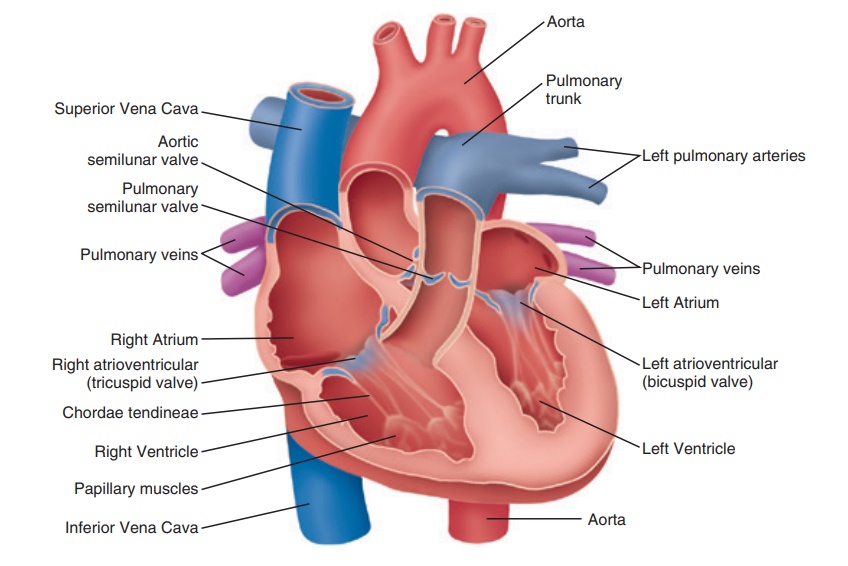The website has the complete lesson note for all the subjects in secondary school but this piece showcases the SS2 Biology Lesson Note on Circulatory Systems. You can use the website search button to filter out the subject of interest to you.
CLICK HERE to download the complete Document: DOWNLOAD HERE
SUBJECT: BIOLOGY
TOPIC: TRANSPORT SYSTEM II
SUB-TOPIC 1: TYPES OF CIRCULATIONS AND CIRCULATORY SYSTEMS
Circulatory system is the continuous flow of blood around the body, involving the heart and the blood vessels.
TYPES OF CIRCULATORY SYSTEMS
- Open circulatory system
- Closed circulatory system
TYPES OF CIRCULATION
- Single circulation
- Double circulation
- Systemic circulation
- Pulmonary circulation
MECHANISM OF TRANSPORTATION IN HIGHER ANIMALS
As a result of the repeated contractions of the heart, the blood circulatory system (i.e., arteries, capillaries and veins) throughout life. All mammals have double circulation. These are the systemic (body) circulation and pulmonary circulation.
- Systemic (body) circulation in which blood is carried from the left ventricle to all body parts except the lungs and back to the right auricle.
- Pulmonary circulation in which blood is carried from the right ventricle to the lungs through the pulmonary veins.
The heart like other organs has a blood supply. The coronary arteries, which branch from the aorta near the heart, carry blood to the heart muscles. The flow of blood through these muscles is called coronary circulation.
The heart continues to beat repeatedly throughout the life and pump blood to the two main circulations and the coronary circulation. When the body is at rest, normal heart beats about 70 to 72 times per minute. The rate of the heart beat increases when one is very active or excited. The liver is the only organ in the body that receives blood by the hepatic artery and hepatic portal vein. The hepatic portal vein carries blood rich in digested food from the stomach and small intestines into the liver. The hepatic portal vein carries blood from the liver into the inferior vena cava.

Human Heart
The human heart is a hollow, pear-shaped organ about the size of a fist. The heart is made of muscle that rhythmically contracts, or beats, pumping blood throughout the body. Oxygen-poor blood from the body enters the heart from two large blood vessels, the inferior vena cava and the superior vena cava, and collects in the right atrium. When the atrium fills, it contracts, and blood passes through the tricuspid valve into the right ventricle. When the ventricle becomes full, it starts to contract, and the tricuspid valve closes to prevent blood from moving back into the atrium. As the right ventricle contracts, it forces blood into the pulmonary artery, which carries blood to the lungs to pick up fresh oxygen. When blood exits the right ventricle, the ventricle relaxes and the pulmonary valve shuts, preventing blood from passing back into the ventricle. Blood returning from the lungs to the heart collects in the left atrium. When this chamber contracts, blood flows through the mitral valve into the left ventricle. The left ventricle fills and begins to contract, and the mitral valve between the two chambers closes. In the final phase of blood flow through the heart, the left ventricle contracts and forces blood into the aorta. After the blood in the left ventricle has been forced out, the ventricle begins to relax, and the aortic valve at the opening of the aorta closes.

Blood Vessels
Blood vessels circulate blood through the body. The three major types of blood vessels are the arteries, veins, and capillaries. Arteries carry blood away from the heart, while veins carry blood toward the heart. Capillaries form at the junction between arteries and veins and they are the only blood vessel to come into direct contact with tissue cells. Oxygen, nutrients, and other substances transported in blood through the arteries pass through thin capillary walls into tissue cells. Wastes and other products of cellular metabolism pass from cells back through the capillary walls and into veins. The walls of arteries and veins are composed of three tunics (layers) that surround a central opening called a lumen, through which blood flows. The innermost layer is the tunica intima, composed of endothelial cells that form a slick lining that minimizes friction as blood moves through the lumen. The middle layer is the tunica media. Composed of smooth muscle cells and sheets of elastic tissue, this layer enables the lumen to narrow or widen to regulate blood flow in the body. The tunica adventitia forms a protective outer layer of the blood vessel wall and it also anchors the blood vessel to
Click on the Downloadable Button to get the FULL NOTE


